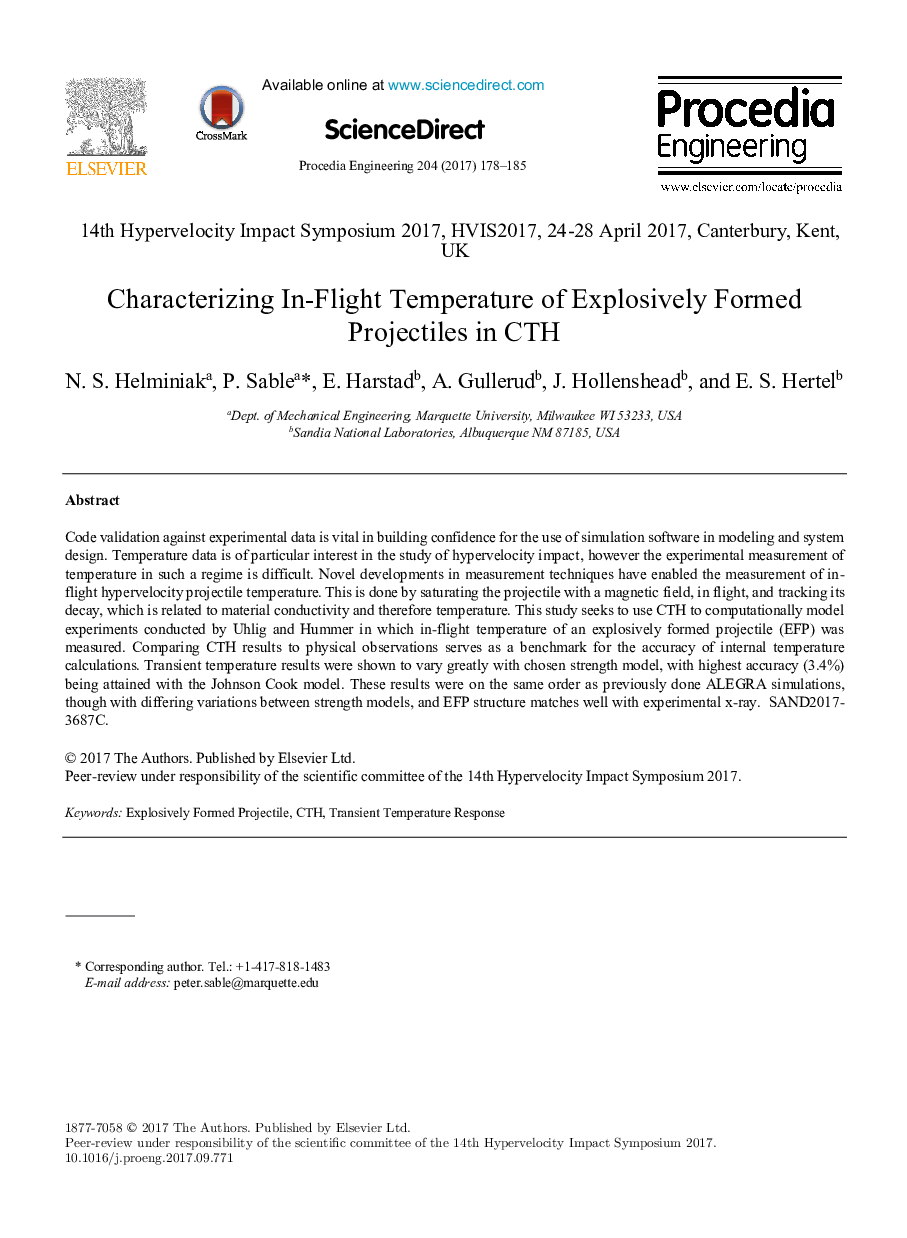| Article ID | Journal | Published Year | Pages | File Type |
|---|---|---|---|---|
| 7227913 | Procedia Engineering | 2017 | 8 Pages |
Abstract
Code validation against experimental data is vital in building confidence for the use of simulation software in modeling and system design. Temperature data is of particular interest in the study of hypervelocity impact, however the experimental measurement of temperature in such a regime is difficult. Novel developments in measurement techniques have enabled the measurement of in-flight hypervelocity projectile temperature. This is done by saturating the projectile with a magnetic field, in flight, and tracking its decay, which is related to material conductivity and therefore temperature. This study seeks to use CTH to computationally model experiments conducted by Uhlig and Hummer in which in-flight temperature of an explosively formed projectile (EFP) was measured. Comparing CTH results to physical observations serves as a benchmark for the accuracy of internal temperature calculations. Transient temperature results were shown to vary greatly with chosen strength model, with highest accuracy (3.4%) being attained with the Johnson Cook model. These results were on the same order as previously done ALEGRA simulations, though with differing variations between strength models, and EFP structure matches well with experimental x-ray. SAND2017-3687C.
Related Topics
Physical Sciences and Engineering
Engineering
Engineering (General)
Authors
N.S. Helminiak, P. Sable, E. Harstad, A. Gullerud, J. Hollenshead, E.S. Hertel,
